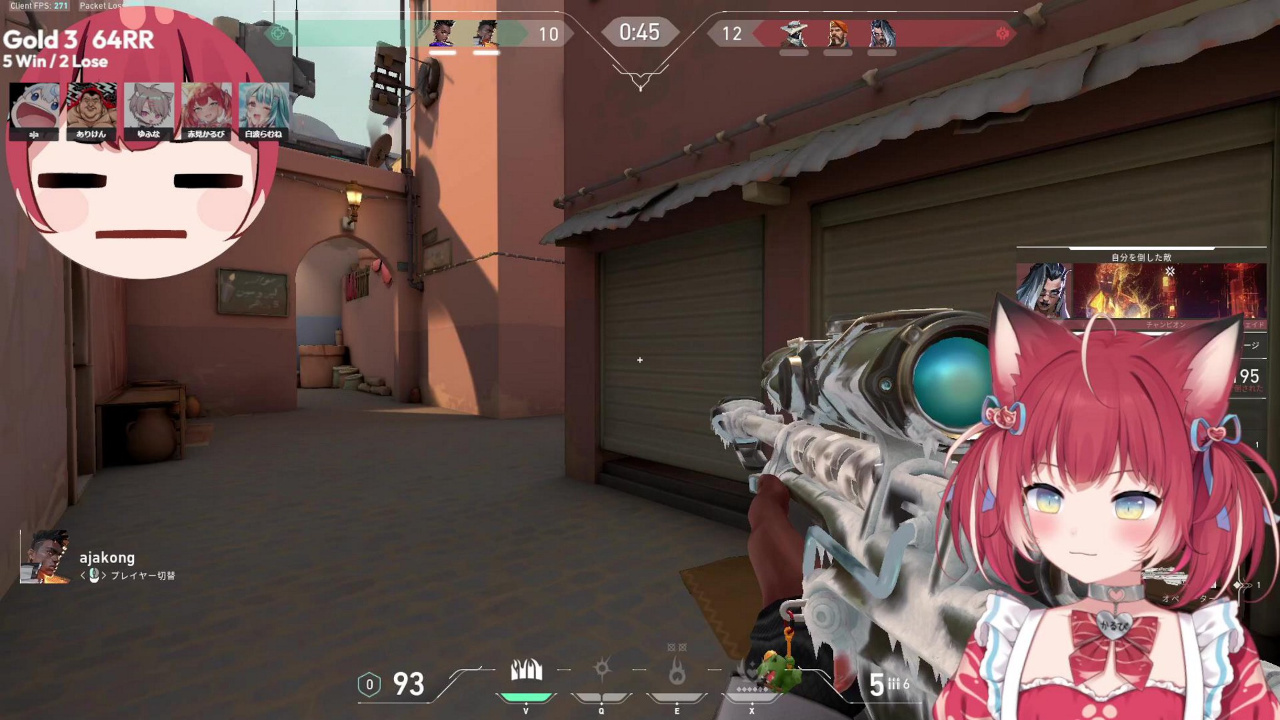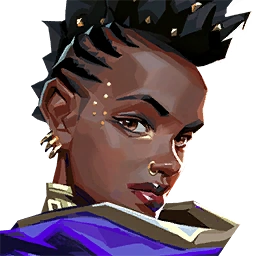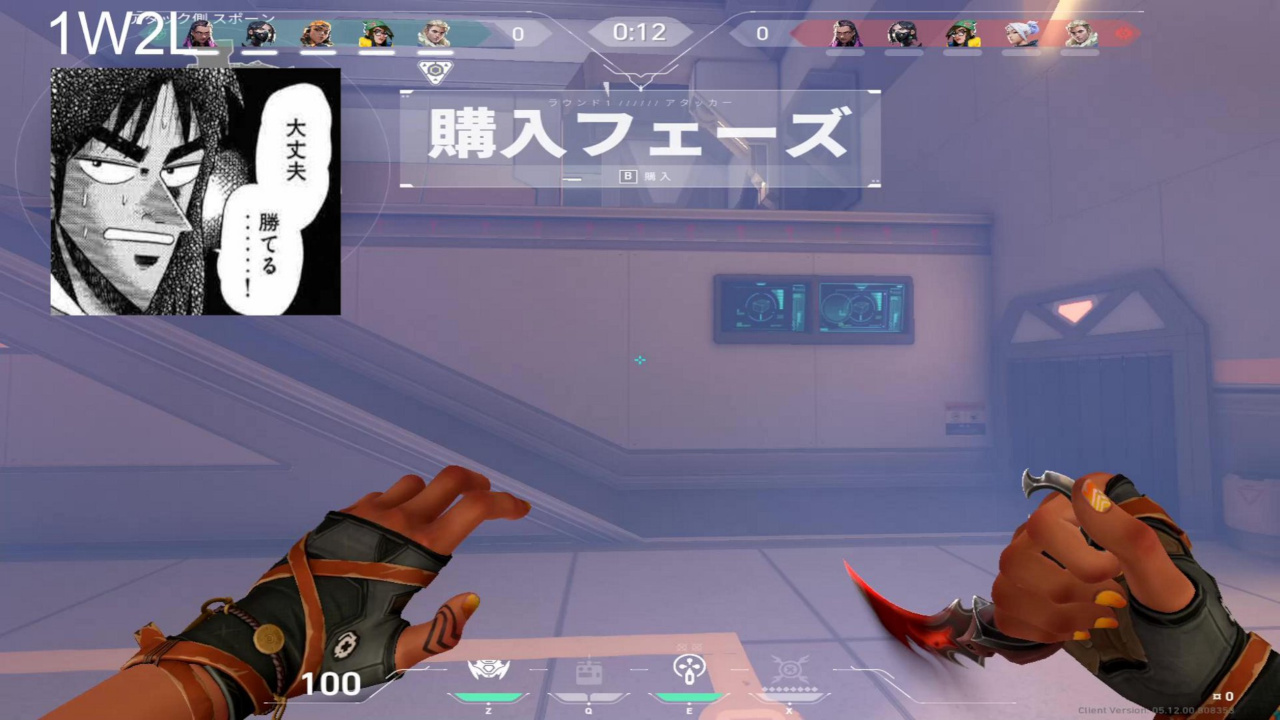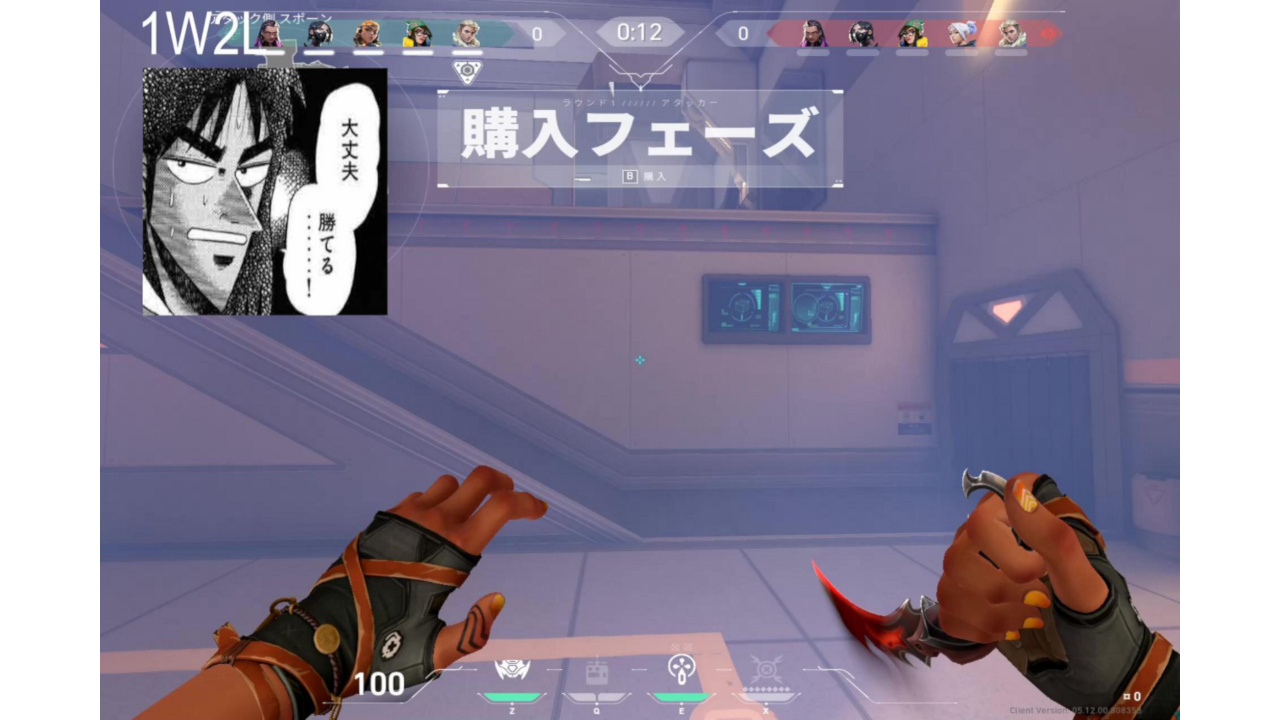vlr-matchups
vlr-matchups is a bunch of scripts that make use of computer vision to deduce if persons playing Valorant, a first-person tactical hero shooter, live on Twitch.tv, are in the same match playing with or against each other, just by looking at still images of their video streams.
A live version can be accessed at: https://vlr-matchups.net
Write-up
Theory
In Valorant, two teams consisting of five heroes (or agents) per team are playing against each other for multiple rounds. The agents are selected from an agent pool before the match and can not be changed during the match. Agents are only unique in regard to one team.
By correlating the team composition, as well as the in-game score seen by two players at a given moment it is possible to calculate a correlation coefficient, and thus how likely it is that they are playing the same match together or against each other.
Raw data acquisition
The first step was to get a list of all streams on Twitch.tv that are currently broadcasting Valorant gameplay. Luckily this was very easy as Twitch provides an extensive API. To get access, only a regular Twitch user account is needed; no additional steps or separate developer verification are required. Quite refreshing for a change.
Now that I have a list of streams I needed to access their content. At first, I thought about capturing still images of the actual video streams myself. This would have been a rather involved process, but definitely doable, thanks to streamlink, ffmpeg or gstreamer.
Instead, I noticed that you can access the preview images of the streams rather easily:
A URL to an image of a frame from the last 5 minutes of the stream. Replace the width and height placeholders in the URL ({width}x{height}) with the size of the image you want, in pixels.
Meaning Twitch does all the work of capturing the stills for me anyway. The only downsides I could think of are the rather limited resolution, and the delay1 between the live content and the preview stills. Before trying anything more complicated I wanted to give it a try and see how far I can get with this approach.
So the problem now boiled down to fetching a number of JPEGs via HTTP. Perfect! And using aiohttp this was also extremely fast.
Score detection
After retrieving all the images, it was time to start extracting the information needed for comparison.
For example, here’s what a generic stream and the Valorant HUD looks like:
In the following examples I used another image to illustrate the process for a background that is more busy.
As the HUD can not be changed by the player, and the position is more or less invariant to changes in resolution, it’s easy to make an educated guess as to where to find the relevant information in absolute coordinates:
As mentioned earlier, the resolution is of the preview images is not the greatest. I needed to clean up all that noise and especially the compression artifacts. So at first, I used a Gaussian blur:
Next up I wanted to sharpen the image again, but by carefully selecting the right kernel for the task in hand, I could choose which features I wanted to sharpen.
In the first picture I used the standard 3x3 sharpening kernel:
I could also have chosen a kernel that includes the diagonals during the convolution:
It would actually achieve a stronger effect, but sharpening diagonal lines would be hindering in our case, because they are mostly unwanted clutter anyway. So we stick with the simpler kernel.
Unfortunately this also introduced some noise again. It would be great to get rid of it, whilst preserving our sharpened edges. A perfect job for Bilaterial Filtering:
And finally I used simple thresholding to get a binary representation of the image:
Commonly it’s not always the case to hit the right threshold value spot on, so I just underestimate and increment it until I either get a positive OCR result or the image is completely (or almost) blank.
This is the final result that gets passed to Tesseract:
If a number is extracted successfully the image moments are calculated, which then can be used to find the centroid of the image, basically the center of mass of all black pixels.
This information is useful to figure out if the numeral was exactly in the middle of the image, as expected, or off to the left or right. Something that comes into play during the next step.
Agent detection
Next up I needed to figure out which agents are playing on either side of match. Fortunately Valorant uses little agent images to convey this information to the players.
Which makes this task very simple, as long as performance is not a major concern. I just scraped all the agent images from the Internet and used template matching.
Each template (agent image) is slid across the input and a value representing the similarity of the overlapping images is calculated for every possible position.
Then I just needed to find the maximum of the resulting matrix and check if its value is greater than a conservative threshold to prevent false-positives.
The same is done for the other team, except that the source image needs to be flipped first.
This worked really well, I almost always got a 100% hit rate. When testing against a larger dataset though, I found that some players seem to prefer to play with a stretched resolution. Apparently hoping to get a competitive edge. This interferes with the simple template matching approach, as it does not account for transformations at all. Meaning that a slightly stretched image can lower the detection rate quite dramatically, as the template no longer is perfectly congruent.
That’s where the position of the score numerals comes in handy. I can calculate how much the image is stretched by taking into account how far off they were from their expected position. Then I just compress the image accordingly, effectively restoring the normal aspect ratio.
Now the template matching works flawlessly again!
Doing it the YOLO way
The aforementioned method of extracting all necessary information yielded satisfactory results. By choosing a conservative threshold for both the OCR and agent detection, to avoid false-positives, it was now easily possible to automatically build a large dataset of correctly annotated images.
Using a computer vision AI like YOLOv5, a custom model can then be trained on this specific dataset.
Here, the YOLOv5s model was used as a starting point. Training continued for 100 epochs with a batch size of 64 on a dataset containing 60.000 annotated images.
The final training result is shown here:
TODO
Instead of a dedicated OCR step the score numbers just have been treated as just another class the YOLO model was trained on. This speeds ob the detection process immensely as it indeed only takes one look now to extract all needed information.
Theoretically it's now also possible to export the model to Tensorflow.js and do the inference directly in the browser without needing a server at all.
Comparing results
If all goes well I end up with information similar to this one for every stream:
player (viewer_count):
Own Team: astra, breach, cypher, phoenix, reyna
Enemy team: chamber, fade, jett
Score: 4 - 5
Valid OCR: True
Note that it is not always possible to extract information about all five agents on a team, as the HUD only displays agents that are still alive in the current round. This can be circumvented easily by remembering the agents the program has seen already for consecutive runs, till eventually we have seen them all.
Nonetheless, it is possible to make a prediction based on incomplete information.
First I compare the score for each team. The closer the scores the higher the probability of it being a match. Currently, I just use a linear weighing function.
The same happens for the agents. Here I take into account the lowest number of known agents per team for weighing the result. This means that comparing a full team on either side has the maximum impact in terms of scoring, whilst gaps in information lower the weight.
Finally, all these scores are multiplied and thus yield the total probability of the two players being in the same game, on the same side.
By switching the teams around for one player, the exact same checks can be carried out, but this time they yield the probability of the two players being in the same game, but on different sides.
And here’s the implementation of said method that compares two player:
if abs(self.score_own - other.score_own) > 4:
return 0.0
else:
score *= -(abs(self.score_own - other.score_own)) / 10 + 1
# same for enemy team
known_agents = min(len(self.team_own), len(other.team_own))
if len(self.team_own & other.team_own) == known_agents and known_agents > 0:
score *= (known_agents * 0.2)
else:
return 0.0
# same for enemy teamDisplaying results
The raw data is written to a JSON file.
For now, I’m just using Jinja2 as a template engine and generate a static HTML page based on this data.
In the frontend folder there’s also a work-in-progress version using Vue.js, which also consumes
the JSON file but makes it easier to filter and/or reorder the results based on the users preferences on the client
side.
Performance
Quoted from the website:
How slow? About one minute to process 100 streams on a dusty old 2.7 GHz Intel i5. Problem is: Only one core gets used. Ever. One could easily shift all the CPU and memory intensive parts to a separate C++ program later and make use of all cores, but for ease of development it was best to stay within Python for as long as possible.
Outstanding issues
-
Haven’t gone through the trouble to find the game screen inside another container. So if the streamer is using borders or some fancy Picture in Picture magic we’re out of luck, for now.
- I’ve tried using a basic SIFT/SURF approach, but the thin-lined HUD just does not have good features which could be easily matched. I’m open to suggestions for a better approach to handle this problem.
-
Currently, the search is limited to the 100 most viewed streams. Anything more and it would just take too long.
-
When comparing matches in the final stage
itertools.combinations()is used, which means when examiningnstreams there are$\binom{n}{2}$ possible combinations. Currently, all of those are evaluated. This could become a problem when scaling up. (For n=100: 4950 combinations)
Feel free to write me an e-mail at felix-vlr @ buckket.org if you have suggestions on how to improve any of these problems. Much appreciated!
Installation
Dependencies
- aiofiles
- aiohttp
- cv2
- numpy
- pillow
- twitchAPI
- tesserocr
License
GNU AGPLv3+
Footnotes
-
The delay, or rather the long cache interval turned out not be a problem at all. Check the source code if you want to see why. ;) ↩












